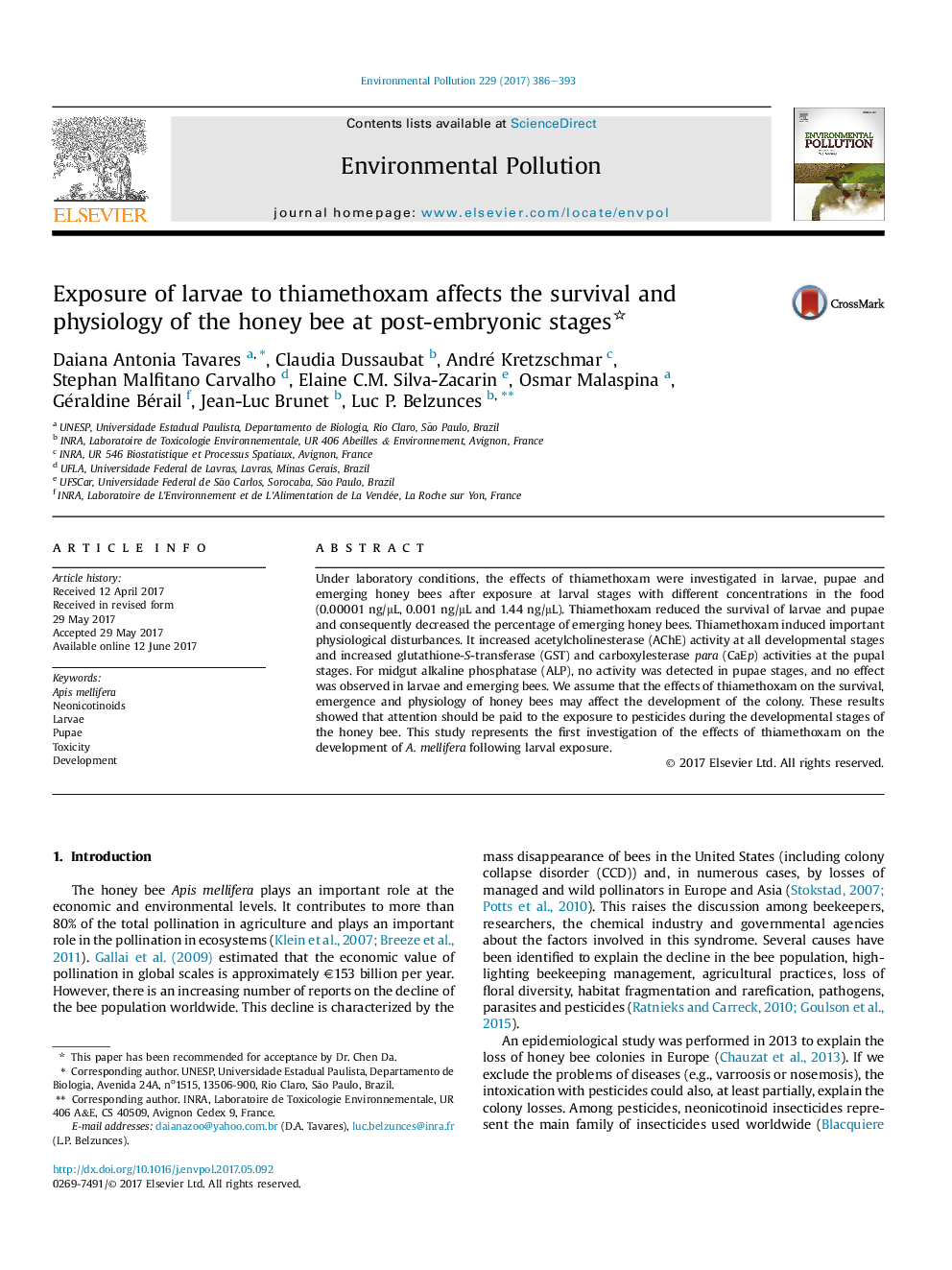| کد مقاله | کد نشریه | سال انتشار | مقاله انگلیسی | نسخه تمام متن |
|---|---|---|---|---|
| 5748786 | 1619144 | 2017 | 8 صفحه PDF | دانلود رایگان |
- The exposure of Apis mellifera larvae to thiamethoxam affects the survival of larvae and pupae.
- Thiamethoxam elicits a reduction in the percentage of emerging honey bees.
- Thiamethoxam induces physiological disruptions at all stages of development.
Under laboratory conditions, the effects of thiamethoxam were investigated in larvae, pupae and emerging honey bees after exposure at larval stages with different concentrations in the food (0.00001 ng/μL, 0.001 ng/μL and 1.44 ng/μL). Thiamethoxam reduced the survival of larvae and pupae and consequently decreased the percentage of emerging honey bees. Thiamethoxam induced important physiological disturbances. It increased acetylcholinesterase (AChE) activity at all developmental stages and increased glutathione-S-transferase (GST) and carboxylesterase para (CaEp) activities at the pupal stages. For midgut alkaline phosphatase (ALP), no activity was detected in pupae stages, and no effect was observed in larvae and emerging bees. We assume that the effects of thiamethoxam on the survival, emergence and physiology of honey bees may affect the development of the colony. These results showed that attention should be paid to the exposure to pesticides during the developmental stages of the honey bee. This study represents the first investigation of the effects of thiamethoxam on the development of A. mellifera following larval exposure.
226
Journal: Environmental Pollution - Volume 229, October 2017, Pages 386-393
